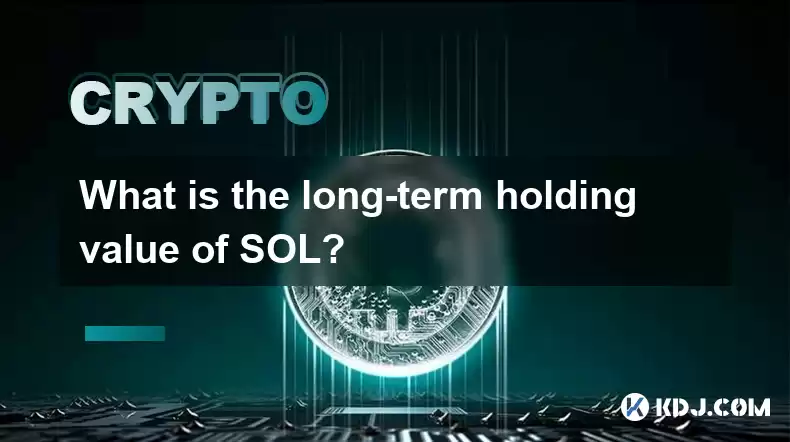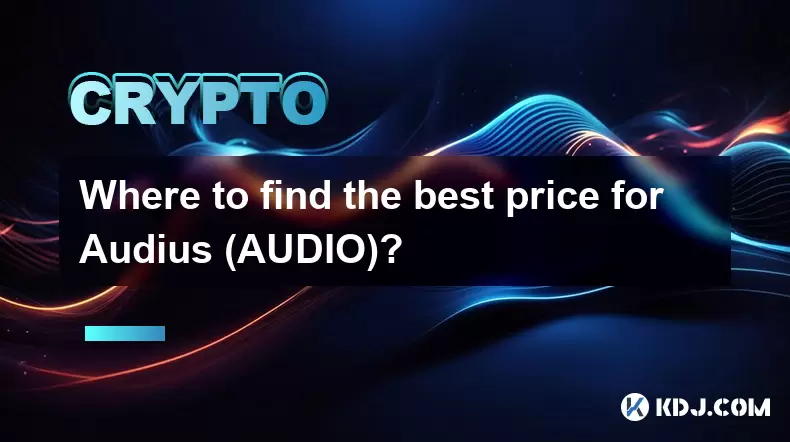-
 Bitcoin
Bitcoin $118900
-2.33% -
 Ethereum
Ethereum $4288
-0.13% -
 XRP
XRP $3.151
-3.21% -
 Tether USDt
Tether USDt $1.000
0.02% -
 BNB
BNB $809.5
-1.17% -
 Solana
Solana $175.7
-4.75% -
 USDC
USDC $0.0000
0.01% -
 Dogecoin
Dogecoin $0.2246
-5.75% -
 TRON
TRON $0.3473
2.19% -
 Cardano
Cardano $0.7809
-5.18% -
 Chainlink
Chainlink $21.38
-3.48% -
 Hyperliquid
Hyperliquid $43.29
-5.53% -
 Stellar
Stellar $0.4375
-3.21% -
 Sui
Sui $3.685
-6.68% -
 Bitcoin Cash
Bitcoin Cash $595.2
3.50% -
 Hedera
Hedera $0.2483
-6.60% -
 Ethena USDe
Ethena USDe $1.001
-0.01% -
 Avalanche
Avalanche $23.03
-5.28% -
 Litecoin
Litecoin $119.5
-5.02% -
 Toncoin
Toncoin $3.395
-0.07% -
 UNUS SED LEO
UNUS SED LEO $9.007
-1.19% -
 Shiba Inu
Shiba Inu $0.00001304
-5.44% -
 Uniswap
Uniswap $11.35
1.57% -
 Polkadot
Polkadot $3.898
-5.43% -
 Cronos
Cronos $0.1671
-0.16% -
 Ethena
Ethena $0.8121
-2.45% -
 Dai
Dai $1.000
0.02% -
 Bitget Token
Bitget Token $4.412
-1.73% -
 Monero
Monero $264.0
-0.64% -
 Pepe
Pepe $0.00001128
-8.12%
What is the long-term holding value of SOL?
Solana's long-term value depends on network adoption, technological progress, and market conditions, but faces risks from competition and regulation; individual risk tolerance is key to investment decisions.
Mar 11, 2025 at 02:35 am

Key Points:
- Solana's long-term value hinges on network adoption, technological advancements, and the overall health of the broader cryptocurrency market.
- While SOL has shown significant price volatility, its underlying technology and ecosystem offer potential for future growth.
- Factors like competition from other Layer-1 blockchains, regulatory uncertainty, and scalability challenges could impact SOL's long-term price.
- Successful implementation of planned upgrades and a thriving developer community are crucial for SOL's continued success.
- Individual risk tolerance and investment strategies heavily influence whether a long-term hold is advisable for any given investor.
What is the long-term holding value of SOL?
Solana (SOL), a high-performance blockchain known for its speed and scalability, has attracted significant attention in the cryptocurrency space. However, determining its long-term holding value requires a nuanced understanding of several interconnected factors. The cryptocurrency market is inherently volatile, and SOL's price is subject to the same fluctuations as other digital assets. Past performance is not indicative of future results.
The core technology underpinning Solana is a key determinant of its potential. Its unique proof-of-history consensus mechanism aims to achieve faster transaction speeds and lower fees compared to other prominent blockchains. This technological advantage could attract developers and users, leading to increased network activity and potentially higher demand for SOL.
However, Solana’s success isn't solely dependent on its technological capabilities. The broader cryptocurrency market significantly impacts its price. Bear markets can depress the value of all cryptocurrencies, including SOL, regardless of their underlying technology. Conversely, bullish market sentiment can drive up prices even for projects with inherent challenges.
Solana faces competition from other Layer-1 blockchains vying for market share. Ethereum, for instance, remains a dominant player, and other emerging networks are also vying for developer and user attention. Solana's ability to differentiate itself and maintain its competitive edge will be crucial for its long-term success.
Network adoption is another critical factor. The more developers build on the Solana network and the more users utilize its decentralized applications (dApps), the greater the demand for SOL, potentially increasing its value. A thriving ecosystem is essential for long-term sustainability.
Scalability, while a touted strength, also presents ongoing challenges. Solana has experienced network outages in the past, raising concerns about its reliability and ability to handle increasing transaction volumes. Addressing these scalability issues and improving network stability is vital for maintaining user trust and attracting further adoption.
Regulatory uncertainty is a pervasive risk across the cryptocurrency industry, and Solana is not immune. Government regulations can significantly impact the price and adoption of cryptocurrencies. Changes in regulatory landscapes could create uncertainty and potentially negatively affect SOL's value.
The Solana Foundation and its development team play a crucial role in the project's long-term viability. Their commitment to innovation, community engagement, and addressing technical challenges will influence the project's trajectory. Continued development and upgrades are essential for maintaining competitiveness.
The strength of the Solana community is another significant factor. A vibrant and engaged community can contribute to the project's growth through development, marketing, and advocacy. Conversely, a dwindling or disengaged community could hinder the project's progress.
Investing in Solana, or any cryptocurrency, involves considerable risk. The price of SOL is highly volatile and can fluctuate dramatically in short periods. Before investing in SOL, it's crucial to conduct thorough research, understand the associated risks, and only invest what you can afford to lose.
Frequently Asked Questions:
Q: Is SOL a good long-term investment?
A: Whether SOL is a good long-term investment depends entirely on your individual risk tolerance, investment goals, and market outlook. It's a high-risk, high-reward proposition.
Q: What are the biggest risks associated with holding SOL long-term?
A: Significant risks include market volatility, competition from other blockchains, regulatory uncertainty, and potential technological challenges.
Q: How does Solana compare to other Layer-1 blockchains?
A: Solana aims to differentiate itself through its speed and scalability, but it faces competition from established players like Ethereum and newer entrants. The competitive landscape is dynamic.
Q: What are the key factors that will determine SOL's future price?
A: Network adoption, technological advancements, regulatory developments, competition, and overall market sentiment are all key determinants.
Q: Should I diversify my crypto portfolio if I'm holding SOL?
A: Diversification is a crucial risk management strategy in any investment portfolio, including cryptocurrency holdings. Don't put all your eggs in one basket.
Disclaimer:info@kdj.com
The information provided is not trading advice. kdj.com does not assume any responsibility for any investments made based on the information provided in this article. Cryptocurrencies are highly volatile and it is highly recommended that you invest with caution after thorough research!
If you believe that the content used on this website infringes your copyright, please contact us immediately (info@kdj.com) and we will delete it promptly.
- Dogecoin, Presale, Surge: Riding the Meme Coin Wave
- 2025-08-12 11:10:12
- Dogecoin, Tron, and the ROI Reality Check: What's a Crypto Investor to Do?
- 2025-08-12 11:15:12
- Ethereum Layer-2 Scaling Competition Heats Up as ETH Breaks $4K
- 2025-08-12 10:30:12
- China Regulation, Stablecoins, and BNB Presale: Navigating the Crypto Landscape
- 2025-08-12 11:30:12
- Meme Coins, Investment, and Token Burns: What's Hot in 2025?
- 2025-08-12 10:30:12
- China's National Security Alarm Bells Ring Over Worldcoin's Iris Scans
- 2025-08-12 11:35:12
Related knowledge

How to purchase Aragon (ANT)?
Aug 09,2025 at 11:56pm
Understanding Aragon (ANT) and Its PurposeAragon (ANT) is a decentralized governance token that powers the Aragon Network, a platform built on the Eth...

Where to trade Band Protocol (BAND)?
Aug 10,2025 at 11:36pm
Understanding the Role of Private Keys in Cryptocurrency WalletsIn the world of cryptocurrency, a private key is one of the most critical components o...

What is the most secure way to buy Ocean Protocol (OCEAN)?
Aug 10,2025 at 01:01pm
Understanding Ocean Protocol (OCEAN) and Its EcosystemOcean Protocol (OCEAN) is a decentralized data exchange platform built on blockchain technology,...

Where can I buy UMA (UMA)?
Aug 07,2025 at 06:42pm
Understanding UMA and Its Role in Decentralized FinanceUMA (Universal Market Access) is an Ethereum-based decentralized finance (DeFi) protocol design...

How to buy Storj (STORJ) tokens?
Aug 09,2025 at 07:28am
Understanding Storj (STORJ) and Its Role in Decentralized StorageStorj is a decentralized cloud storage platform that leverages blockchain technology ...

Where to find the best price for Audius (AUDIO)?
Aug 11,2025 at 04:01pm
Understanding the Basics of Ethereum StakingEthereum staking refers to the process of locking up ETH tokens to support the security and operations of ...

How to purchase Aragon (ANT)?
Aug 09,2025 at 11:56pm
Understanding Aragon (ANT) and Its PurposeAragon (ANT) is a decentralized governance token that powers the Aragon Network, a platform built on the Eth...

Where to trade Band Protocol (BAND)?
Aug 10,2025 at 11:36pm
Understanding the Role of Private Keys in Cryptocurrency WalletsIn the world of cryptocurrency, a private key is one of the most critical components o...

What is the most secure way to buy Ocean Protocol (OCEAN)?
Aug 10,2025 at 01:01pm
Understanding Ocean Protocol (OCEAN) and Its EcosystemOcean Protocol (OCEAN) is a decentralized data exchange platform built on blockchain technology,...

Where can I buy UMA (UMA)?
Aug 07,2025 at 06:42pm
Understanding UMA and Its Role in Decentralized FinanceUMA (Universal Market Access) is an Ethereum-based decentralized finance (DeFi) protocol design...

How to buy Storj (STORJ) tokens?
Aug 09,2025 at 07:28am
Understanding Storj (STORJ) and Its Role in Decentralized StorageStorj is a decentralized cloud storage platform that leverages blockchain technology ...

Where to find the best price for Audius (AUDIO)?
Aug 11,2025 at 04:01pm
Understanding the Basics of Ethereum StakingEthereum staking refers to the process of locking up ETH tokens to support the security and operations of ...
See all articles

























































































